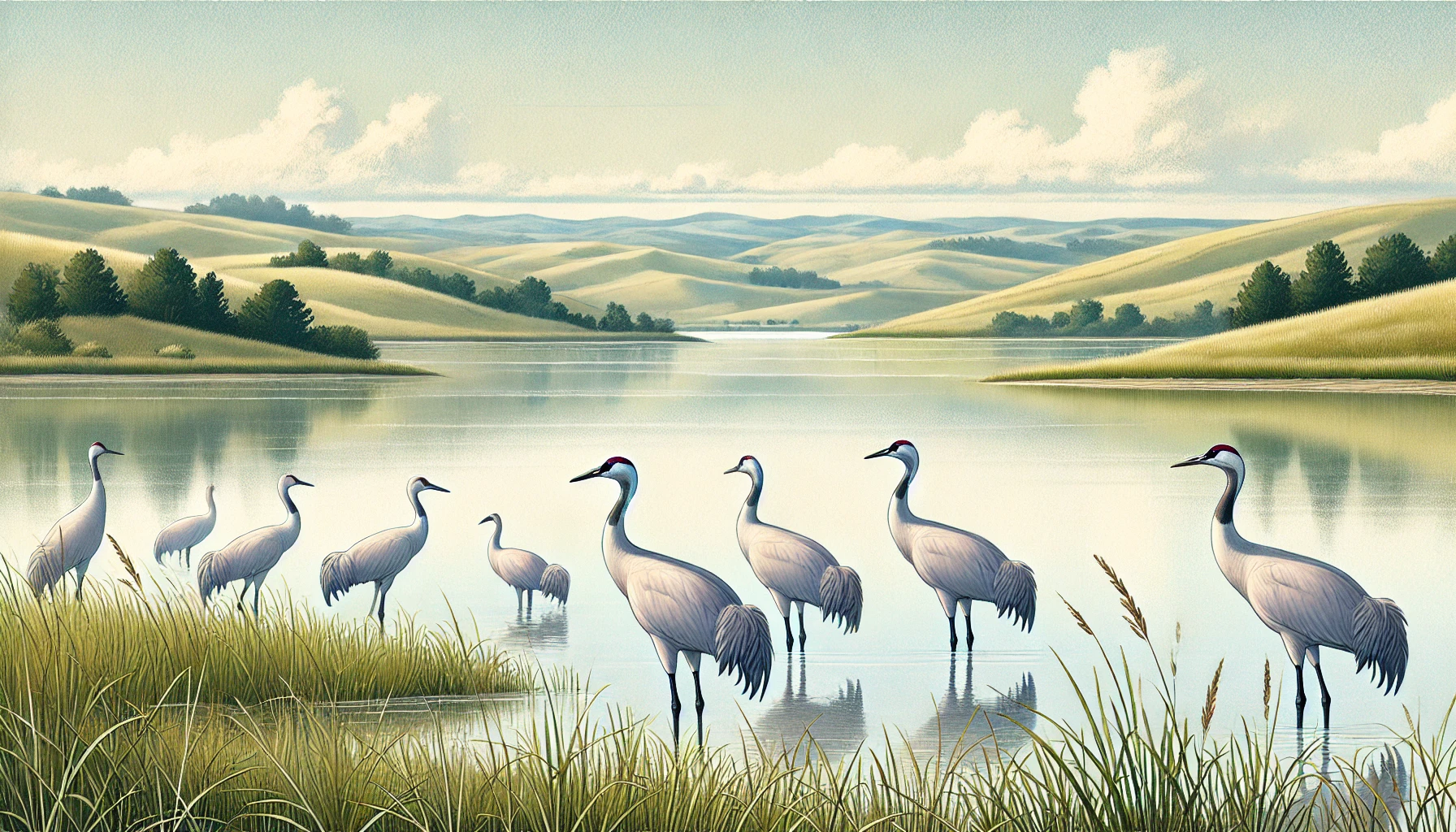Traveling Through Nebraska's Hidden Gem:

Lake Manawa State Park's Rich Ecosystem
Located in West Pottawattamie County, Iowa, just outside of Council Bluffs at 9200 North Lake Manawa Drive, Lake Manawa State Park is an often-overlooked yet vital component in Nebraska's ecological landscape. A mere 20-minute drive from Omaha, the park provides a tranquil escape for nature enthusiasts and offers opportunities to delve into a complex network of natural and human-altered features. Spanning over 1,500 acres, the park showcases wetlands, forests, and open grasslands surrounding a 750-acre oxbow lake.
Initially formed by the shifting Missouri River, the oxbow lake that defines the park's landscape came to be when a bend in the river was isolated from the main watercourse. By examining the processes behind this oxbow's creation, researchers can better comprehend the region's historical relationship with the Missouri River and its long-lasting impact on the surrounding ecosystem. Additional geological features, including sandy ridges, point to the ever-present hand of water and natural processes shaping the area's topography.
The diverse and interconnected habitats within Lake Manawa State Park are characterized by forest, including cottonwood and silver maple tree stands, open fields and a dense woodland of various deciduous tree species. Understanding the specific ecological dynamics that occur within each habitat plays a critical role in maintaining balance in the park's constantly shifting ecosystem. To better address the need for habitat preservation and management, consistent ecological assessment is implemented through collaborative research between conservation groups and concerned parties.
Within the lake, various aquatic ecosystems can be identified by the different zones characterized by differing parameters. At the surface of Lake Manawa, researchers observe areas of free water with a largely seasonal drawdown effect due to fluctuations in precipitation patterns. Submerged aquatic vegetation helps to regulate water quality, particularly at deeper depths. Data has shown variable flow rates through the lake, reflecting larger Missouri River basin flow variations, creating challenges for wildlife assessment within flow regime changes.
Wildlife managers tasked with identifying particularly important habitats and related species located in the park contend with a variety of challenging environmental conditions. The once threatened western prairie fringed orchid was reintroduced by managing habitat, and a breeding population of black-footed ferrets now inhabits sites around Lake Manawa, demonstrating a clear example of habitat conservation efforts translating to real-world positive change. Park activities such as walking trails and boating offer outdoor enthusiasts an inspiring firsthand experience with some exceptional local heritage.
Conversely, as integral environmental services and habitat destruction disrupt wildlife occurrences, we can still be committed stewards of a region's natural features. Key decision areas would concentrate around habitat manipulation as management efforts and careful control of these ecosystems by professional wildlife management intervention which is reflected in outcomes of surveys by Nebraska authorities are taken, bringing optimism for regional protection. Clearly defined management programs are established to promote interaction awareness between humans and local ecosystems.
Given the multifaceted environmental dynamics intertwined within Lake Manawa State Park, residents of Nebraska will undoubtedly find endless opportunities for nature study through appreciation and recreation offered within the diverse natural surroundings found here.
Located in West Pottawattamie County, Iowa, just outside of Council Bluffs at 9200 North Lake Manawa Drive, Lake Manawa State Park is an often-overlooked yet vital component in Nebraska's ecological landscape. A mere 20-minute drive from Omaha, the park provides a tranquil escape for nature enthusiasts and offers opportunities to delve into a complex network of natural and human-altered features. Spanning over 1,500 acres, the park showcases wetlands, forests, and open grasslands surrounding a 750-acre oxbow lake.
Initially formed by the shifting Missouri River, the oxbow lake that defines the park's landscape came to be when a bend in the river was isolated from the main watercourse. By examining the processes behind this oxbow's creation, researchers can better comprehend the region's historical relationship with the Missouri River and its long-lasting impact on the surrounding ecosystem. Additional geological features, including sandy ridges, point to the ever-present hand of water and natural processes shaping the area's topography.
The diverse and interconnected habitats within Lake Manawa State Park are characterized by forest, including cottonwood and silver maple tree stands, open fields and a dense woodland of various deciduous tree species. Understanding the specific ecological dynamics that occur within each habitat plays a critical role in maintaining balance in the park's constantly shifting ecosystem. To better address the need for habitat preservation and management, consistent ecological assessment is implemented through collaborative research between conservation groups and concerned parties.
Within the lake, various aquatic ecosystems can be identified by the different zones characterized by differing parameters. At the surface of Lake Manawa, researchers observe areas of free water with a largely seasonal drawdown effect due to fluctuations in precipitation patterns. Submerged aquatic vegetation helps to regulate water quality, particularly at deeper depths. Data has shown variable flow rates through the lake, reflecting larger Missouri River basin flow variations, creating challenges for wildlife assessment within flow regime changes.
Wildlife managers tasked with identifying particularly important habitats and related species located in the park contend with a variety of challenging environmental conditions. The once threatened western prairie fringed orchid was reintroduced by managing habitat, and a breeding population of black-footed ferrets now inhabits sites around Lake Manawa, demonstrating a clear example of habitat conservation efforts translating to real-world positive change. Park activities such as walking trails and boating offer outdoor enthusiasts an inspiring firsthand experience with some exceptional local heritage.
Conversely, as integral environmental services and habitat destruction disrupt wildlife occurrences, we can still be committed stewards of a region's natural features. Key decision areas would concentrate around habitat manipulation as management efforts and careful control of these ecosystems by professional wildlife management intervention which is reflected in outcomes of surveys by Nebraska authorities are taken, bringing optimism for regional protection. Clearly defined management programs are established to promote interaction awareness between humans and local ecosystems.
Given the multifaceted environmental dynamics intertwined within Lake Manawa State Park, residents of Nebraska will undoubtedly find endless opportunities for nature study through appreciation and recreation offered within the diverse natural surroundings found here.
